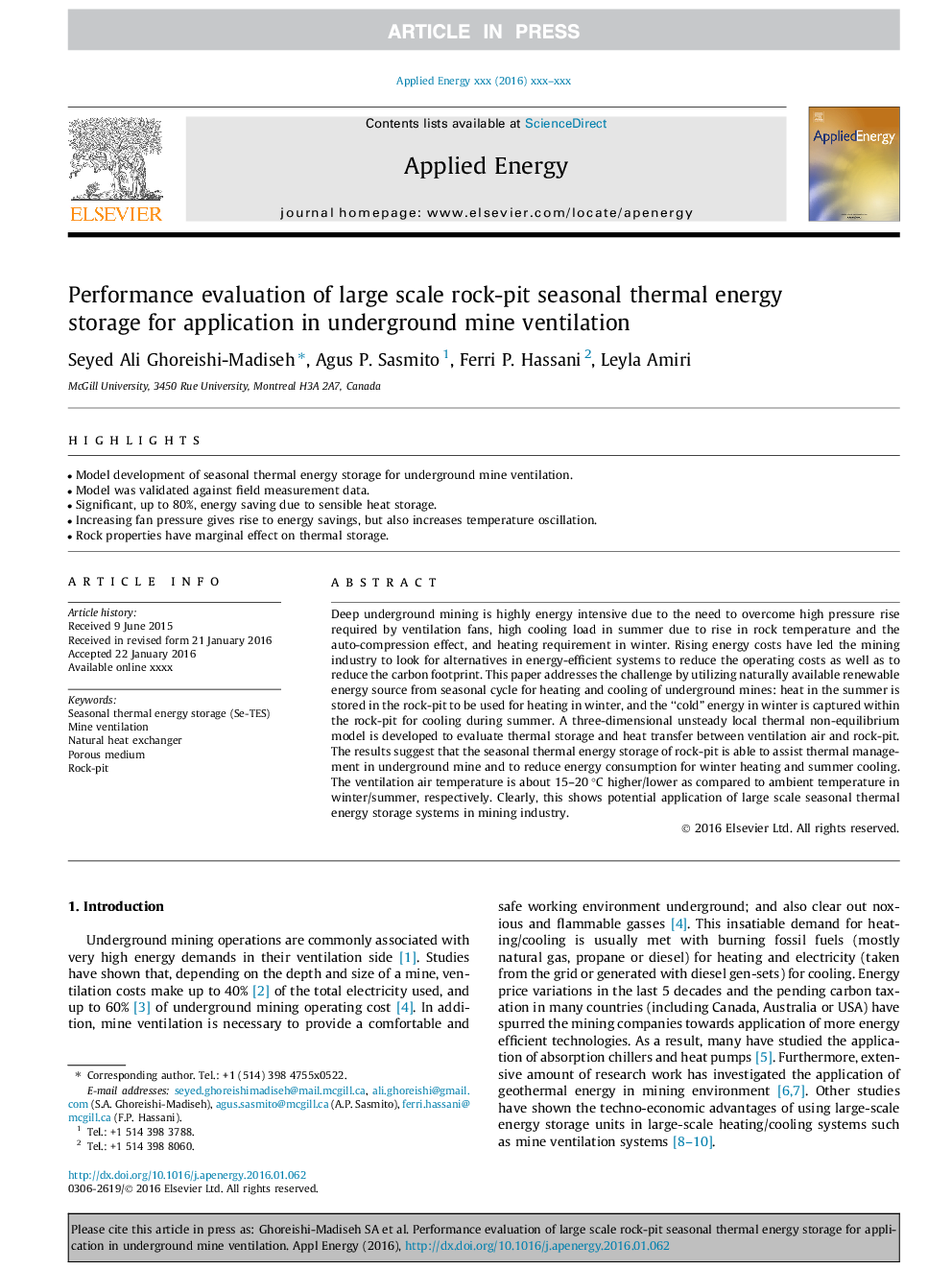| Article ID | Journal | Published Year | Pages | File Type |
|---|---|---|---|---|
| 4917126 | Applied Energy | 2017 | 8 Pages |
Abstract
Deep underground mining is highly energy intensive due to the need to overcome high pressure rise required by ventilation fans, high cooling load in summer due to rise in rock temperature and the auto-compression effect, and heating requirement in winter. Rising energy costs have led the mining industry to look for alternatives in energy-efficient systems to reduce the operating costs as well as to reduce the carbon footprint. This paper addresses the challenge by utilizing naturally available renewable energy source from seasonal cycle for heating and cooling of underground mines: heat in the summer is stored in the rock-pit to be used for heating in winter, and the “cold” energy in winter is captured within the rock-pit for cooling during summer. A three-dimensional unsteady local thermal non-equilibrium model is developed to evaluate thermal storage and heat transfer between ventilation air and rock-pit. The results suggest that the seasonal thermal energy storage of rock-pit is able to assist thermal management in underground mine and to reduce energy consumption for winter heating and summer cooling. The ventilation air temperature is about 15-20 °C higher/lower as compared to ambient temperature in winter/summer, respectively. Clearly, this shows potential application of large scale seasonal thermal energy storage systems in mining industry.
Keywords
Related Topics
Physical Sciences and Engineering
Energy
Energy Engineering and Power Technology
Authors
Seyed Ali Ghoreishi-Madiseh, Agus P. Sasmito, Ferri P. Hassani, Leyla Amiri,
